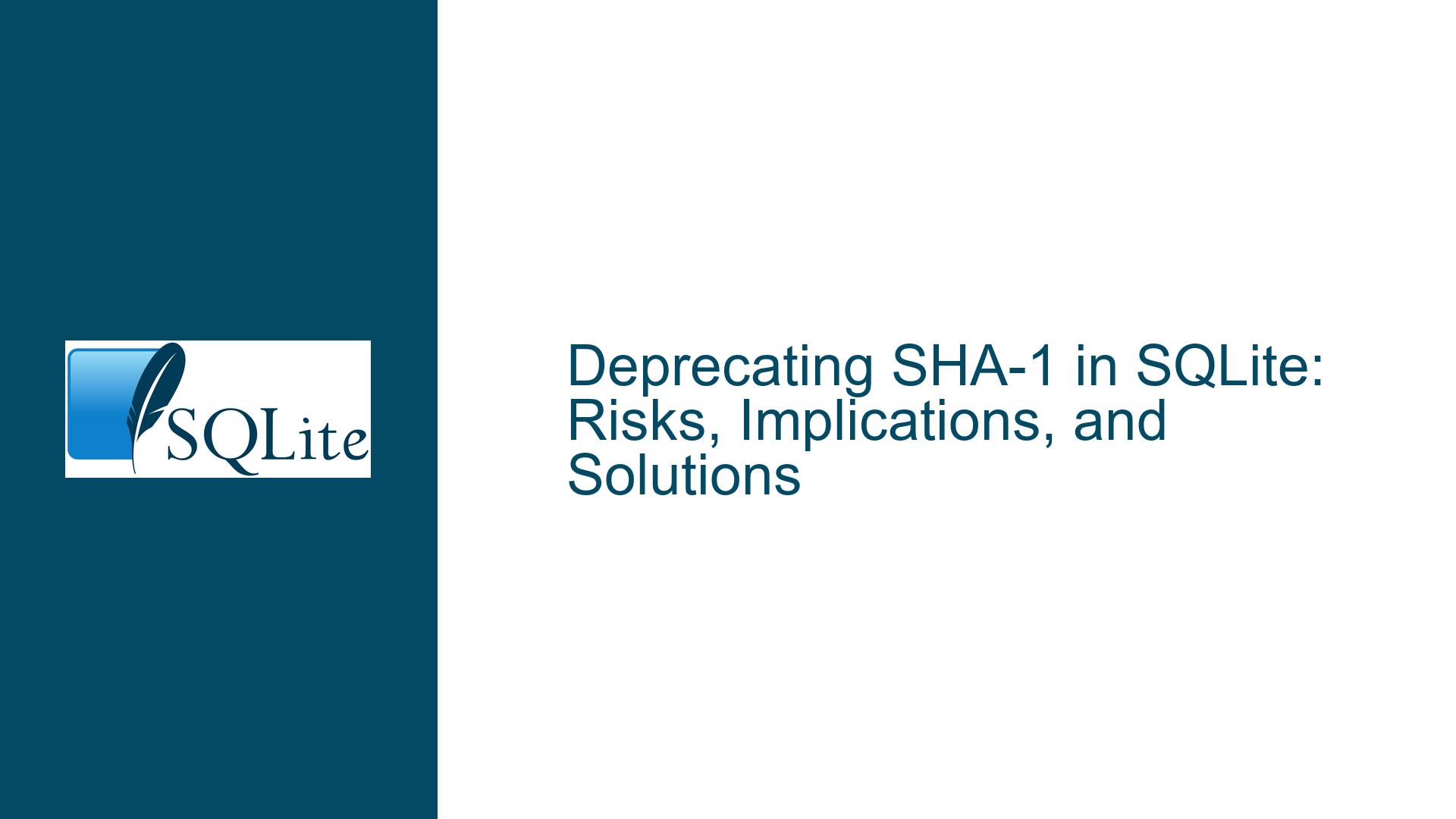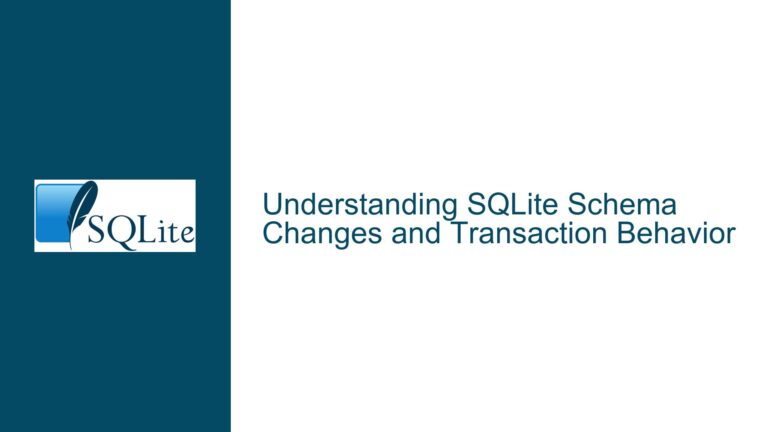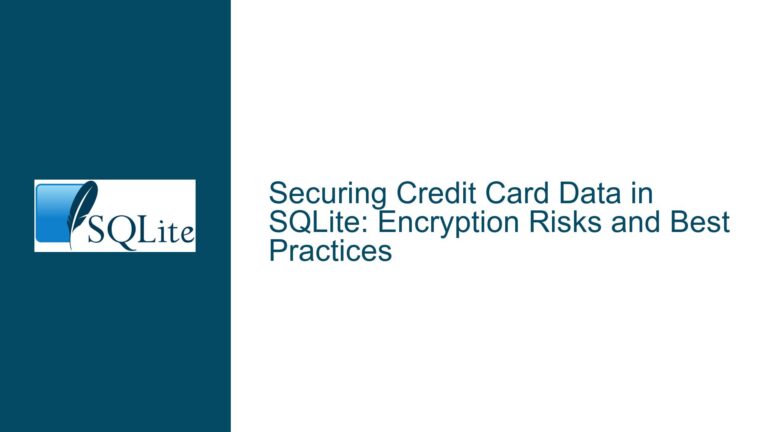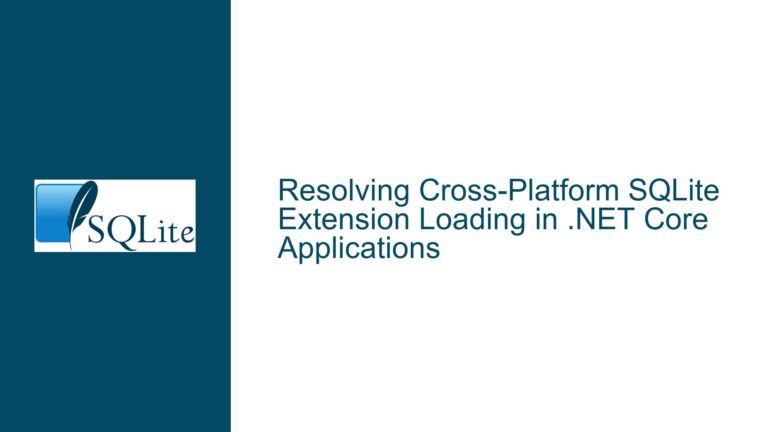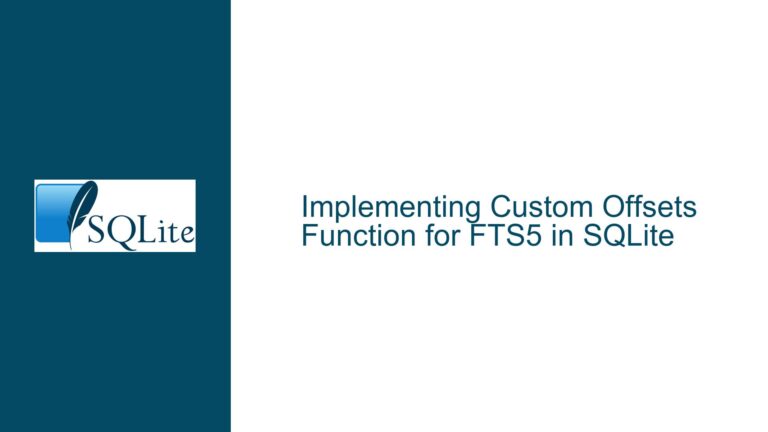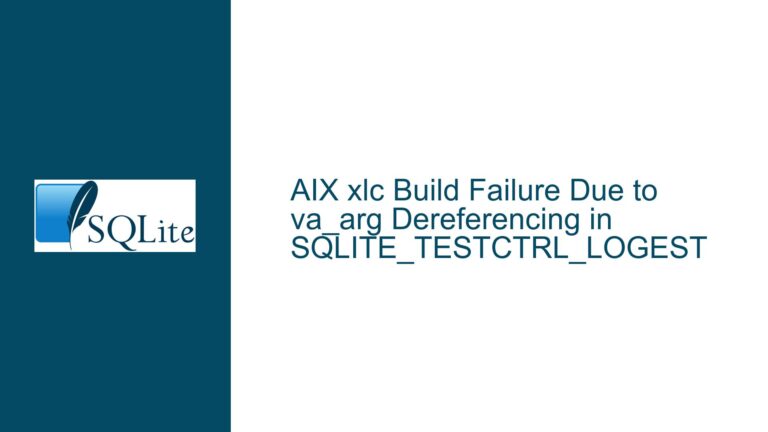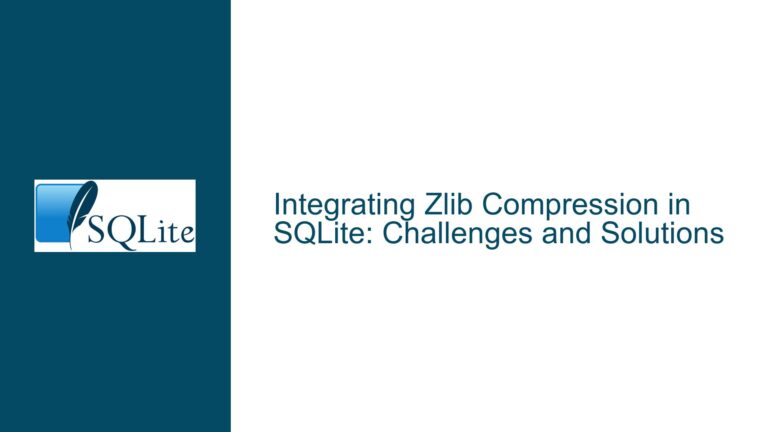Deprecating SHA-1 in SQLite: Risks, Implications, and Solutions
Understanding the Role of SHA-1 in SQLite and Its Deprecation Context
The discussion revolves around the deprecation of SHA-1 in SQLite, particularly in the context of RHEL-9’s system-wide crypto policies. SHA-1, once a widely used cryptographic hash function, has been deemed insecure for digital signatures and authentication due to vulnerabilities that make it susceptible to collision attacks. While SQLite itself does not inherently rely on SHA-1 for its core functionality, the presence of SHA-1 implementations within SQLite extensions has raised concerns, especially for distributions like RHEL-9 that are phasing out SHA-1 usage.
SQLite includes SHA-1 as part of its extensions, which are optional components that users can enable or disable based on their needs. These extensions provide additional functionality, such as computing SHA-1 hashes, which can be useful for applications that require backward compatibility or specific use cases like generating unique identifiers or checksums. However, the deprecation of SHA-1 in RHEL-9 poses a challenge for packages that include SHA-1 implementations, as they must either remove or justify the continued use of SHA-1 to comply with the new crypto policies.
The core issue lies in balancing the need for cryptographic security with the practical requirements of maintaining compatibility and functionality in existing systems. While SHA-1 is no longer suitable for security-sensitive applications, it may still serve legitimate purposes in non-security contexts, such as data integrity checks or legacy support. Therefore, the deprecation of SHA-1 in SQLite must be approached with a clear understanding of its role, the potential impact of its removal, and the available alternatives.
Potential Risks and Challenges of Removing SHA-1 from SQLite
Removing SHA-1 from SQLite is not a straightforward task, as it involves several risks and challenges that must be carefully considered. One of the primary concerns is the impact on existing applications that rely on SHA-1 for specific functionalities. For example, some applications may use SHA-1 to generate unique identifiers or checksums for data integrity purposes. Removing SHA-1 could break these applications, leading to data corruption or loss of functionality.
Another challenge is the potential for unintended consequences in systems that depend on SQLite. As highlighted in the discussion, SQLite is a foundational component of many software packages, and removing SHA-1 could have a cascading effect on these dependencies. For instance, if a critical system like dnf or python3 relies on SQLite’s SHA-1 implementation, removing it could render these systems inoperable. This underscores the importance of thoroughly assessing the dependencies and usage patterns of SHA-1 in SQLite before making any changes.
Additionally, the deprecation of SHA-1 raises questions about backward compatibility. Many legacy systems and applications may still rely on SHA-1 for various purposes, and removing it could disrupt these systems. While it is important to phase out insecure cryptographic algorithms, it is equally important to ensure that the transition is managed in a way that minimizes disruption and provides adequate support for affected systems.
Finally, there is the issue of maintaining cryptographic flexibility. SQLite’s extensions are designed to provide users with a wide range of functionalities, including cryptographic hashing. Removing SHA-1 could limit this flexibility, especially for users who require SHA-1 for specific use cases. Therefore, any decision to remove SHA-1 must be weighed against the need to maintain a versatile and user-friendly database system.
Strategies for Addressing SHA-1 Deprecation in SQLite
Given the complexities and challenges associated with deprecating SHA-1 in SQLite, a multi-faceted approach is necessary to address the issue effectively. This approach should focus on minimizing disruption, maintaining compatibility, and providing viable alternatives to SHA-1.
1. Assessing the Necessity of SHA-1 in SQLite: The first step is to determine whether SHA-1 is truly necessary for SQLite’s core functionality. As Richard Hipp pointed out, SHA-1 is not required by SQLite itself but is included as part of its extensions. This means that users can choose to exclude SHA-1 from their SQLite builds if it is not needed. For distributions like RHEL-9, this provides an opportunity to disable SHA-1 without affecting the core functionality of SQLite.
2. Providing Clear Documentation and Guidance: To help users navigate the deprecation of SHA-1, it is essential to provide clear documentation and guidance on how to disable SHA-1 in SQLite and what alternatives are available. This documentation should include step-by-step instructions for modifying SQLite builds, as well as examples of how to replace SHA-1 with more secure algorithms like SHA-2 or SHA-3. Additionally, the documentation should address common use cases for SHA-1 and provide recommendations for transitioning to alternative solutions.
3. Offering Backward Compatibility Options: For users who require SHA-1 for legacy purposes, it may be necessary to provide backward compatibility options. This could include maintaining SHA-1 as an optional extension that users can enable if needed, while discouraging its use in new applications. By offering this flexibility, SQLite can support both modern cryptographic standards and legacy systems, ensuring a smooth transition for all users.
4. Collaborating with the Community: Addressing the deprecation of SHA-1 in SQLite requires collaboration with the broader community, including developers, distributors, and users. By engaging with the community, SQLite maintainers can gain valuable insights into the specific needs and challenges of different stakeholders, and work together to develop solutions that meet these needs. This collaborative approach can also help build consensus around the best practices for deprecating SHA-1 and ensure that the transition is managed effectively.
5. Monitoring and Evaluating the Impact: Finally, it is important to monitor and evaluate the impact of deprecating SHA-1 in SQLite. This includes tracking the adoption of alternative algorithms, assessing the performance and security implications of these alternatives, and addressing any issues that arise during the transition. By continuously monitoring the impact of these changes, SQLite maintainers can ensure that the deprecation of SHA-1 is carried out in a way that maximizes security and minimizes disruption.
In conclusion, the deprecation of SHA-1 in SQLite is a complex issue that requires careful consideration of the risks, challenges, and potential solutions. By taking a thoughtful and collaborative approach, SQLite maintainers can address this issue in a way that balances the need for cryptographic security with the practical requirements of maintaining compatibility and functionality in existing systems.
